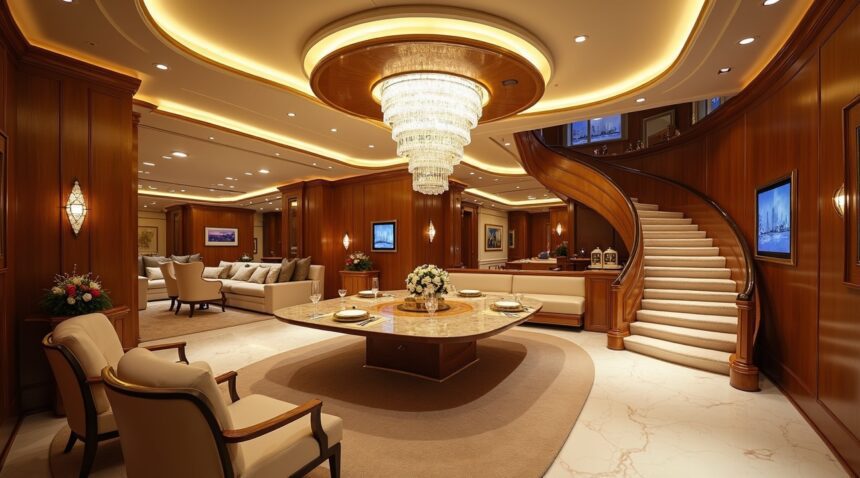A Saudi billionaire once commissioned a $600 million transformation of a Boeing 747-8 Intercontinental, turning it into the most luxurious and spacious private jet ever created—an 8,000-square-foot flying palace brimming with opulence.
Key Takeaways
- The aircraft features a monumental 8,000-square-foot cabin, including marble floors, a 20-foot dining table, a 130-inch entertainment screen, and a master suite complete with a $70,000 custom-made mattress.
- With a total cost of $600 million, this custom aircraft is nearly nine times more expensive than top-tier luxury jets like the Gulfstream G650ER, showcasing customizations only possible in an aircraft of this size.
- This airborne estate boasts a wide array of facilities, including a fully equipped medical room, a $12 million communications system, and ample accommodations for up to 30 passengers in private bedrooms with en-suite bathrooms.
- Despite its state-of-the-art design, the aircraft remains largely unused, having changed ownership multiple times due to operational limitations, its specialized layout, and the high cost of ongoing maintenance.
- The jet has become aviation’s most expensive unused asset, standing as a paradoxical symbol of groundbreaking engineering that ultimately proved to be functionally impractical.
The Flying Palace That Never Flew
Commissioning a reconfiguration of one of Boeing’s largest commercial aircraft into a personal luxurious haven was a feat few could dream of. The completion of this aircraft involved collaborations with top design firms and cutting-edge technology providers who transformed it into a marvel of airborne luxury.
As reported by sources including CNN, the jet’s lavish interiors rivaled those of five-star hotels, featuring rare materials, expansive floorplans, and elite amenities fit for royalty.
A Monument to Excess
Yet, despite the billions poured into its creation, the aircraft stayed mostly on the ground. Logistical issues, high upkeep costs, and the impracticality of maneuvering such a large plane for personal travel contributed to its limited use.
This enormous project underscores a crucial lesson: even unlimited wealth and unparalleled craftsmanship have their limitations when confronted by practicality and logistics. The world’s most expensive jet, unused and unboarded by its owner, remains a striking illustration of that truth.
The $600 Million Flying Palace That Never Took Flight
A Saudi billionaire commissioned what would become aviation history’s most expensive failure – a Boeing 747-8 Intercontinental transformed into the world’s largest private jet. The total investment reached $600 million, creating one of the most ambitious flying palaces ever conceived. This wasn’t just another luxury aircraft; it represented the pinnacle of private aviation engineering and opulence.
Engineering Marvel With Multiple Identities
The aircraft, registered as N7478D, carried a complex history reflected in its multiple previous registrations: A7-HJA, A7-HBJ, and P4-HBJ. Each registration change told part of the story of this extraordinary machine’s journey through various ownership and operational phases. The jet’s fuselage stretches an impressive 250 feet (76 meters), making it longer than any other airliner of its time.
Boeing’s 747-8 Intercontinental served as the foundation for this flying palace, but the customizations pushed the boundaries of what’s possible in private aviation. The aircraft’s sheer size allowed for amenities that smaller private jets simply can’t accommodate. I find it fascinating how the engineering team managed to balance the technical requirements of flight with the luxury demands of a billionaire client.
The Unlucky Legacy of Luxury
Despite the enormous investment and engineering achievement, this jet earned the unfortunate title of the world’s unluckiest private jet. The Saudi billionaire who commissioned this aerial mansion never actually set foot aboard his creation. This absence transformed what should have been the ultimate symbol of success into an aviation curiosity that captures attention for all the wrong reasons.
The reasons behind the owner’s decision to avoid his $600 million investment remain shrouded in mystery. Some industry observers speculate about logistical challenges, while others point to potential changes in personal circumstances or preferences. What’s certain is that this aircraft represents one of the most expensive unused assets in private aviation history.
The jet’s story reflects broader trends in how billionaires spend their wealth on increasingly ambitious projects. The aviation industry has seen numerous examples of ultra-wealthy individuals pushing the boundaries of what’s possible, though few reach the scale and cost of this particular endeavor.
This Boeing 747-8 BBJ stands as a testament to both human ambition and the unpredictable nature of luxury investments. The aircraft’s specifications and capabilities remain impressive by any measure. Its length advantage over other airliners opened up possibilities for interior layouts that could rival luxury hotels or even small palaces.
The $600 million price tag wasn’t just for the base aircraft – it included extensive customizations that would have created:
- Living spaces
- Entertainment areas
- Amenities befitting a billionaire’s lifestyle
Every square foot of the 250-foot fuselage could have been optimized for comfort, privacy, and luxury that few people ever experience.
Aviation enthusiasts continue to discuss this aircraft as a cautionary tale about the intersection of extreme wealth and ambitious engineering projects. The jet represents both the pinnacle of what’s possible in private aviation and the reality that even unlimited budgets can’t guarantee successful outcomes.
The aircraft’s multiple registration changes suggest a complex ownership and operational history that adds layers to its already intriguing story. Each registration likely represented different phases in the jet’s development or attempts to find new purposes for this extraordinary machine.
This flying palace remains a grand yet unfulfilled symbol of aviation luxury, forever linked to the mystery of why its original owner chose never to experience the fruits of his substantial investment. The story serves as a reminder that in the world of ultra-luxury assets, technical achievement doesn’t always translate to personal satisfaction or practical use.
https://www.youtube.com/watch?v=TJM5L4pU3KA
8,000 Square Feet of Airborne Luxury
The aircraft’s cabin spans an extraordinary 8,000 square feet, delivering more than double the space found in conventional luxury jets. This massive interior creates an unprecedented flying experience that rivals the finest ground-based residences, transforming air travel into something entirely different from traditional aviation.
Architectural Grandeur at 40,000 Feet
Upon entry, guests encounter a grand entrance hall featuring 20-foot ceilings and a sweeping circular staircase that immediately establishes the jet’s palace-like atmosphere. I find this architectural approach particularly striking because it defies every conventional assumption about aircraft interior design. The cabin floor consists of real marble that’s been specially treated to reduce weight without sacrificing the material’s natural beauty and prestige. Above, a custom chandelier crafted from aircraft-grade materials provides elegant illumination while meeting strict aviation safety requirements.
The main lounge accommodates 30 passengers with reconfigurable, handcrafted furniture where each individual piece costs more than a family sedan. This investment in artisanal craftsmanship reflects the owner’s commitment to creating something truly exceptional. The centerpiece dining area features a 20-foot table constructed from a 200-year-old tree that’s been reinforced with carbon fiber, combining historical significance with modern engineering to seat 18 guests comfortably.
Entertainment reaches astronomical levels through a 130-inch retractable screen paired with a sound system valued at over $1 million. Hidden speakers embedded throughout the cabin walls create an immersive audio experience that would make billionaires spend their money on similar extravagances. The integration of these technologies required extensive engineering to ensure proper weight distribution and electrical systems compatibility with aircraft operations.
Every design element serves dual purposes of luxury and functionality, addressing the unique challenges of creating livable space within an aircraft environment. The marble flooring required specialized treatment processes to achieve the necessary weight reduction while maintaining structural integrity. Similarly, the entertainment systems needed custom installation approaches to handle the vibrations and electrical demands of flight operations.
The reconfigurable furniture system allows the space to transform based on specific needs, whether hosting business meetings, formal dinners, or casual gatherings. This adaptability maximizes the utility of every square foot, though the sheer scale means the aircraft could accommodate multiple simultaneous activities without crowding.
Climate control systems maintain perfect environmental conditions throughout the massive space, requiring advanced HVAC engineering to handle the volume and varying altitudes. The lighting design incorporates both the statement chandelier and ambient systems that adjust automatically based on time of day and flight conditions.
Storage solutions throughout the cabin provide space for personal belongings, business materials, and entertainment equipment without compromising the aesthetic vision. Custom millwork conceals necessary aircraft systems while maintaining the palace-like appearance that defines the interior design philosophy.
The integration of all these luxury elements required years of planning and execution, with each component requiring certification for aviation use. Weight calculations demanded precision engineering to ensure the aircraft could still perform safely while carrying this extraordinary interior. The result represents the pinnacle of private aviation luxury, creating a flying environment that surpasses most ground-based luxury accommodations in both scale and sophistication.
The Master Suite That Rivals Five-Star Hotels
I can hardly imagine what it feels like to walk through a private aircraft that makes luxury hotels seem modest by comparison. This flying palace boasts a master suite spanning 500 square feet—larger than most New York City apartments and certainly more opulent than anything you’d find in Manhattan’s cramped real estate market.
Unparalleled Sleeping Quarters and Guest Accommodations
The centerpiece of this aerial mansion features a $70,000 custom mattress paired with a king-sized bed that transforms air travel into the ultimate rest experience. I find it fascinating that someone would invest such an extraordinary amount in sleep comfort at 40,000 feet. The en-suite bathroom doesn’t disappoint either, complete with a full shower and gold-plated fixtures that would make even the most exclusive resorts envious.
Beyond the master quarters, four additional guest bedrooms ensure that traveling companions enjoy their own private retreats. Each bedroom comes equipped with its own bathroom, eliminating any potential awkwardness or inconvenience during long flights. This level of accommodation planning reflects the same attention to detail that billionaires often display when customizing their most prized possessions.
Medical Facilities and Advanced Communications
Perhaps most impressive is the fully equipped medical room that provides healthcare services comparable to rural hospitals. I can appreciate the practical wisdom behind this addition—when you’re flying over oceans or remote territories, having comprehensive medical capabilities onboard becomes invaluable. The medical suite represents more than luxury; it’s a safety investment that could prove life-saving during emergencies.
The aircraft’s $12 million custom communications system delivers in-flight internet connectivity that rivals most home networks. This isn’t your typical airline WiFi that struggles with basic email. Instead, passengers can:
- Conduct business meetings
- Stream high-definition content
- Maintain constant contact with global operations
without missing a beat. The communications infrastructure essentially creates a mobile office that never loses touch with ground-based operations, regardless of geographic location.
What strikes me most about these accommodations is how they completely redefine air travel expectations. While commercial passengers squeeze into cramped seats and fight for armrest space, this private jet offers living spaces that exceed what many people have in their actual homes. The master suite alone provides more luxury square footage than most hotel rooms, complete with amenities that would impress guests at the world’s finest resorts.
The medical room particularly demonstrates forward-thinking planning. Rather than simply focusing on comfort and entertainment, the aircraft’s designers recognized that true luxury includes comprehensive safety measures. Having hospital-grade medical equipment accessible during flight eliminates concerns about health emergencies that might occur over international waters or in countries with limited medical infrastructure.
The communications system represents another practical luxury that enhances both productivity and entertainment. Business dealings can continue seamlessly during transcontinental flights, while family members can maintain video calls or access streaming services without the typical frustrations of poor connectivity. This level of technological integration ensures that the aircraft functions as a genuine extension of ground-based living and working spaces.
Each guest bedroom’s private bathroom arrangement shows consideration for passenger privacy and comfort that commercial aviation simply can’t match. Travelers never need to queue for facilities or compromise their personal space, creating an environment where long flights become genuinely restful experiences rather than endurance tests.
The $70,000 mattress investment alone exceeds what many people spend on their entire bedroom furniture. This single purchase demonstrates how extreme wealth can transform even basic necessities like sleep into extraordinary experiences. Combined with the gold-plated bathroom fixtures and shower facilities, the master suite creates a flying environment that surpasses most ground-based luxury accommodations.
https://www.youtube.com/watch?v=AXZpJYfLzPI
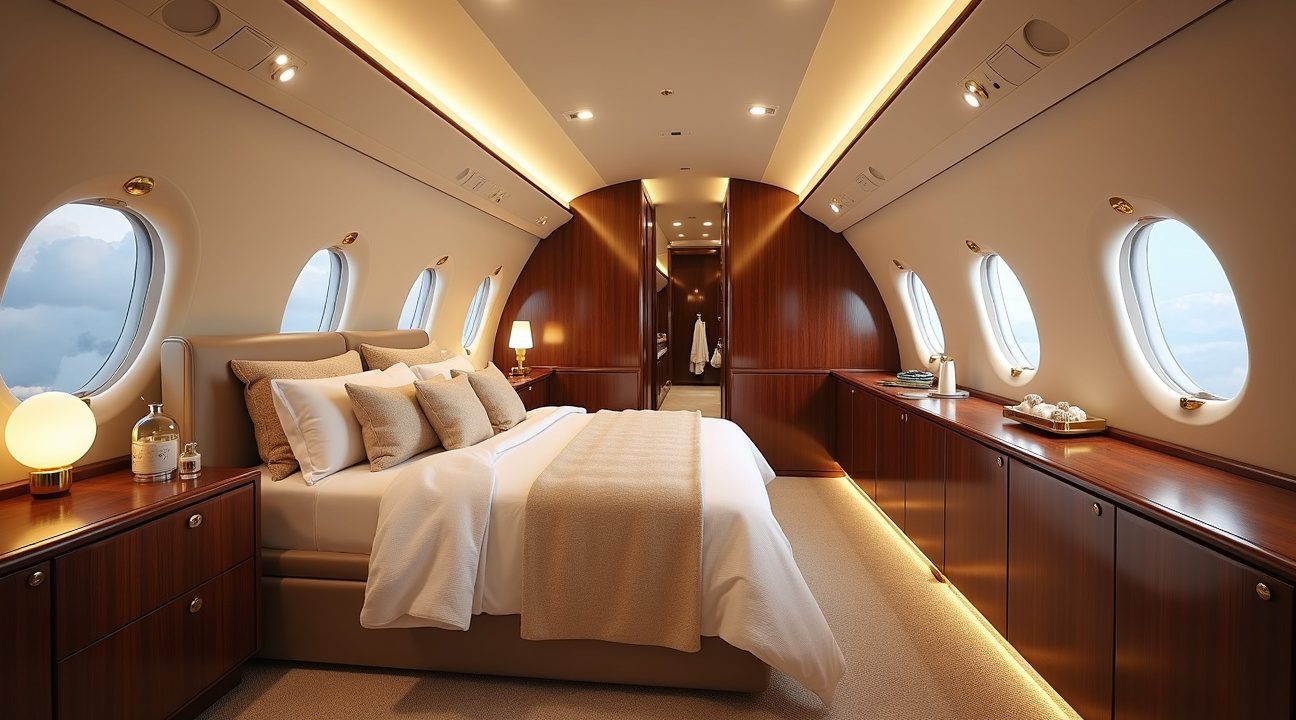
Unmatched Performance and Operational Capabilities
The Airbus A380’s four Rolls-Royce Trent 556 engines deliver extraordinary performance that sets this flying palace apart from conventional private jets. I can appreciate how these powerhouses enable the aircraft to achieve a transcontinental range of up to 7,800 nautical miles non-stop, surpassing most other luxury private aircraft in both scale and operational capability.
The fuel consumption tells a remarkable story about this aircraft’s sheer magnitude. At 13,000 gallons per hour, this jet burns more fuel than a typical car uses in an entire decade. Such consumption reflects the immense power required to keep this airborne mansion cruising at altitude, carrying its luxurious amenities across continents without refueling stops.
Advanced Flight Operations
Operating this aerial giant requires exceptional expertise and cutting-edge technology. The experienced crew consists of two pilots, a flight engineer, and a communications specialist, each bringing specialized skills essential for managing such a complex aircraft. This crew configuration ensures safe operation while maintaining the highest standards of luxury service throughout every flight.
The flight deck showcases aviation’s most advanced technology, where pilot seats alone cost over $100,000 each. These aren’t ordinary cockpit chairs – they’re precision-engineered command centers designed to support pilots during extended flights across multiple time zones. The cockpit’s sophisticated systems mirror those found in commercial aviation’s most advanced aircraft, adapted for private luxury operations.
Capabilities That Define Excellence
Several factors contribute to this aircraft’s exceptional operational profile:
- Range capabilities that eliminate most refueling stops on international routes
- Advanced navigation systems enabling direct routing to virtually any destination worldwide
- Climate control systems maintaining perfect cabin conditions regardless of external weather
- Communication arrays providing seamless connectivity during transoceanic flights
- Redundant safety systems exceeding commercial aviation standards
The combination of range, luxury, and operational flexibility creates possibilities that few aircraft can match. Whether flying from Riyadh to Los Angeles or London to Singapore, this flying palace maintains its opulent environment while covering distances that would require multiple stops in smaller private jets. The technical specifications demonstrate why billionaires choose such extraordinary aircraft for their private transportation needs.
Advanced autopilot systems and weather radar technology ensure smooth flights even in challenging conditions. The aircraft’s size provides natural stability that smaller jets can’t achieve, creating a more comfortable experience for passengers accustomed to the finest accommodations. Every operational aspect reflects the engineering excellence that makes this the ultimate expression of private aviation luxury.
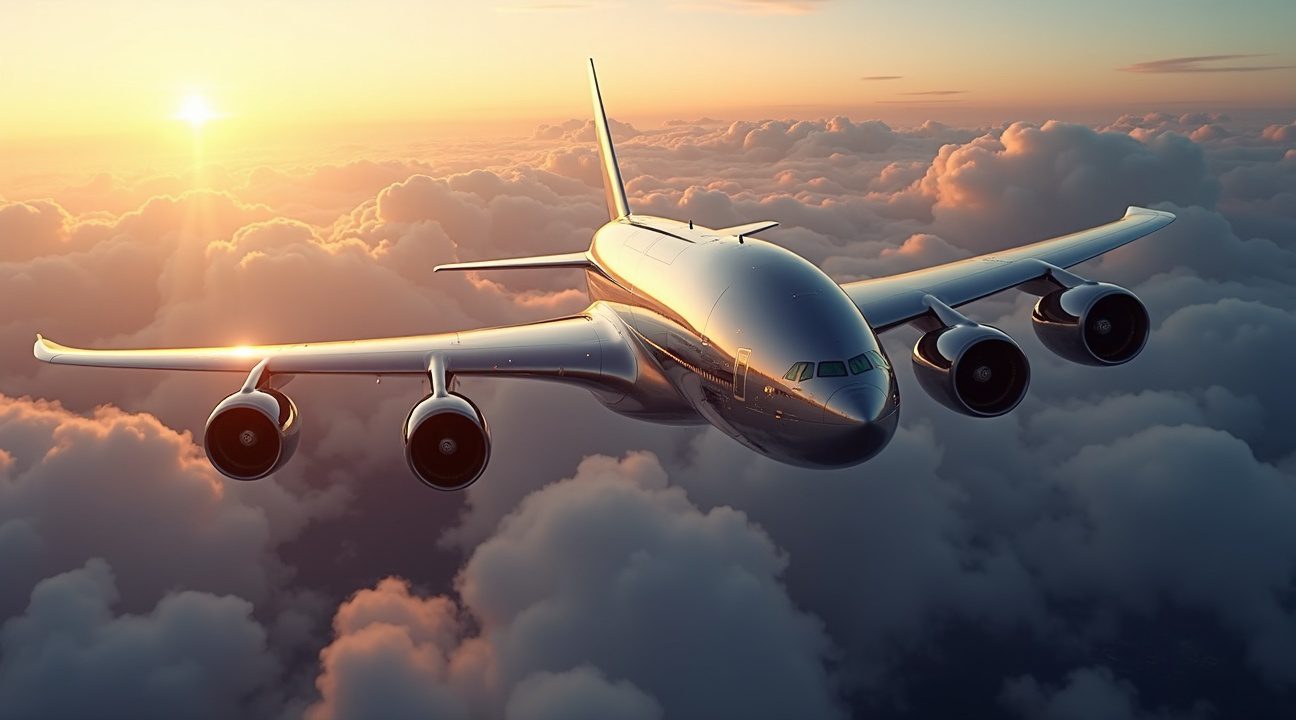
How It Compares to Other Flying Palaces
Private aviation’s elite showcase their wealth through extraordinary aircraft, but the Boeing 747-8 BBJ towers above all competitors in sheer scale and extravagance. This behemoth redefines what it means to own a flying palace, dwarfing even the most luxurious jets in the sky.
Size and Space Comparison
The 747-8 BBJ commands attention with its massive 8,000-square-foot cabin space, stretching across a 250-foot fuselage that provides room for multiple bedrooms, conference areas, and entertainment zones. I find this aircraft’s dimensions particularly striking when compared to other premium options in the market.
Consider the Gulfstream G650ER, widely regarded as one of aviation’s finest business jets. Despite its $70 million price tag and impressive 7,500 nautical mile range, it offers just 2,486 square feet of cabin space—less than one-third of the 747-8 BBJ’s interior. The difference becomes even more pronounced when examining the Bombardier Global 7500, which features a cabin measuring just over 54 feet long and eight feet wide. While this aircraft boasts a high-speed cruise capability of Mach 0.90 and costs between $73-$75 million, its interior feels cramped compared to the Saudi billionaire’s airborne mansion.
Price and Performance Analysis
The $600 million valuation of the 747-8 BBJ places it in a category entirely separate from conventional private jets. This astronomical figure reflects not just the aircraft’s base cost, but the extensive customization required to transform a commercial airliner into a personal sanctuary. Billionaires spend their money on increasingly elaborate projects, yet few investments match the audacity of converting a jumbo jet into a private residence.
Standard luxury jets like the Gulfstream G650ER and Bombardier Global 7500 represent significant investments for most ultra-wealthy individuals. However, the 747-8 BBJ costs nearly nine times more than these aircraft combined. The price differential stems from the aircraft’s massive scale, which allows for amenities impossible in smaller jets—think full-sized kitchens, multiple bathrooms, private offices, and even dedicated sleeping quarters for staff.
Performance characteristics reveal another interesting contrast. While smaller jets prioritize speed and efficiency, the 747-8 BBJ emphasizes comfort and space over pure performance metrics. The Bombardier Global 7500’s Mach 0.90 cruise speed significantly exceeds the 747-8’s capabilities, but passengers aboard the larger aircraft enjoy amenities that make flight duration irrelevant.
The irony of this comparison becomes apparent when considering utilization. Smaller jets like the G650ER see regular use by their owners, justifying their cost through practical transportation value. The 747-8 BBJ, despite its unmatched luxury and space, represents a different philosophy entirely—one where the journey itself becomes the destination.
Aircraft manufacturers continue pushing boundaries in private aviation, yet none have attempted to match the 747-8 BBJ’s sheer scale. The engineering challenges, operational costs, and limited airport accessibility make such projects impractical for most buyers. Even among the world’s wealthiest individuals, few possess both the resources and desire to commission such an extraordinary aircraft.
The comparison highlights how the 747-8 BBJ stands alone in aviation history—not merely as transportation, but as a statement of unprecedented luxury. While other flying palaces offer comfort and convenience, none approach the grandeur and ambition embodied in this remarkable aircraft that its owner ultimately never experienced.
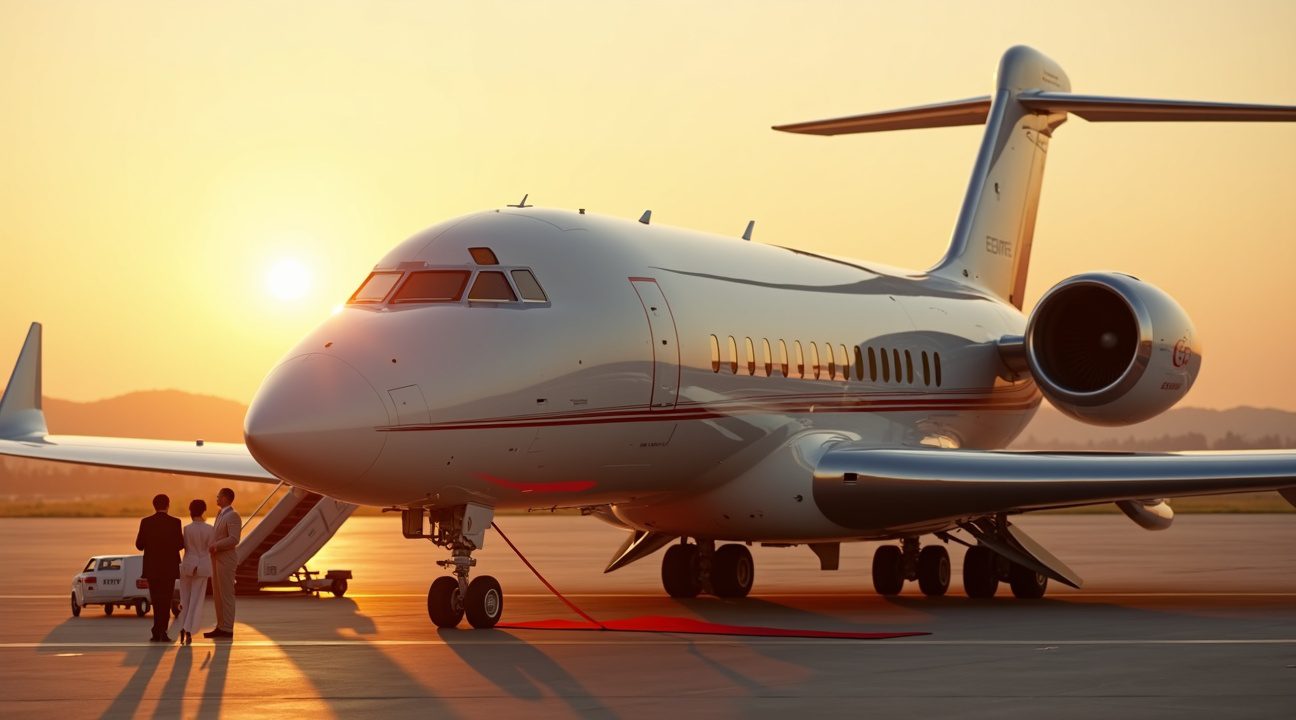
The Mystery Behind the Unused Palace
Despite its extraordinary grandeur, the Boeing 747-8 BBJ never fulfilled its original destiny as an airborne residence for a Saudi billionaire. This flying palace, with its unprecedented scale and luxury, remains one of aviation’s most puzzling mysteries—a testament to wealth that never translated into actual use.
The aircraft has changed hands multiple times since its initial commissioning, passing through various ownership structures and registration changes. Each new owner faced the same fundamental challenge: what exactly does one do with a $400 million aircraft designed for such specific and extravagant purposes? The jet’s highly specialized interior configuration makes it nearly impossible to convert for traditional commercial or even luxury charter use.
A Monument to Unfulfilled Dreams
The irony runs deeper than simple buyer’s remorse. This isn’t just about unique ways billionaires spend their money—it’s about the practical limitations that even unlimited wealth can’t overcome. The aircraft’s sheer size creates operational nightmares. Most airports can’t accommodate its special ground requirements, and the ongoing maintenance costs exceed what many airlines spend on their entire fleets.
No subsequent owner has successfully repurposed the aircraft despite its obvious appeal. The custom-built features that made it attractive as a private residence actually work against it in any other capacity. Landing rights, parking fees, and crew requirements create a perfect storm of logistical challenges that make regular use prohibitively complex.
The Boeing 747-8 BBJ represents something more significant than a failed vanity project. It stands as a physical reminder of how extreme wealth can create objects so specialized that they become functionally useless. The aircraft exists in a strange limbo—too expensive to scrap, too impractical to fly, and too unique to ignore.
Today, this flying palace serves as an unintended monument to the paradox of unlimited resources. While other billionaires pursue space ventures or build artificial islands, this particular dream remains grounded. The jet that was meant to redefine luxury air travel instead became a cautionary tale about the gap between vision and reality.
The mystery deepens when considering that the original Saudi client apparently never even stepped aboard his custom creation. Whether due to changing circumstances, second thoughts, or unforeseen complications, the billionaire’s flying palace became someone else’s expensive puzzle. The aircraft continues to exist as perhaps the most exclusive mode of transportation that nobody actually uses—a $400 million reminder that some dreams are too grand even for those with unlimited means to pursue them.
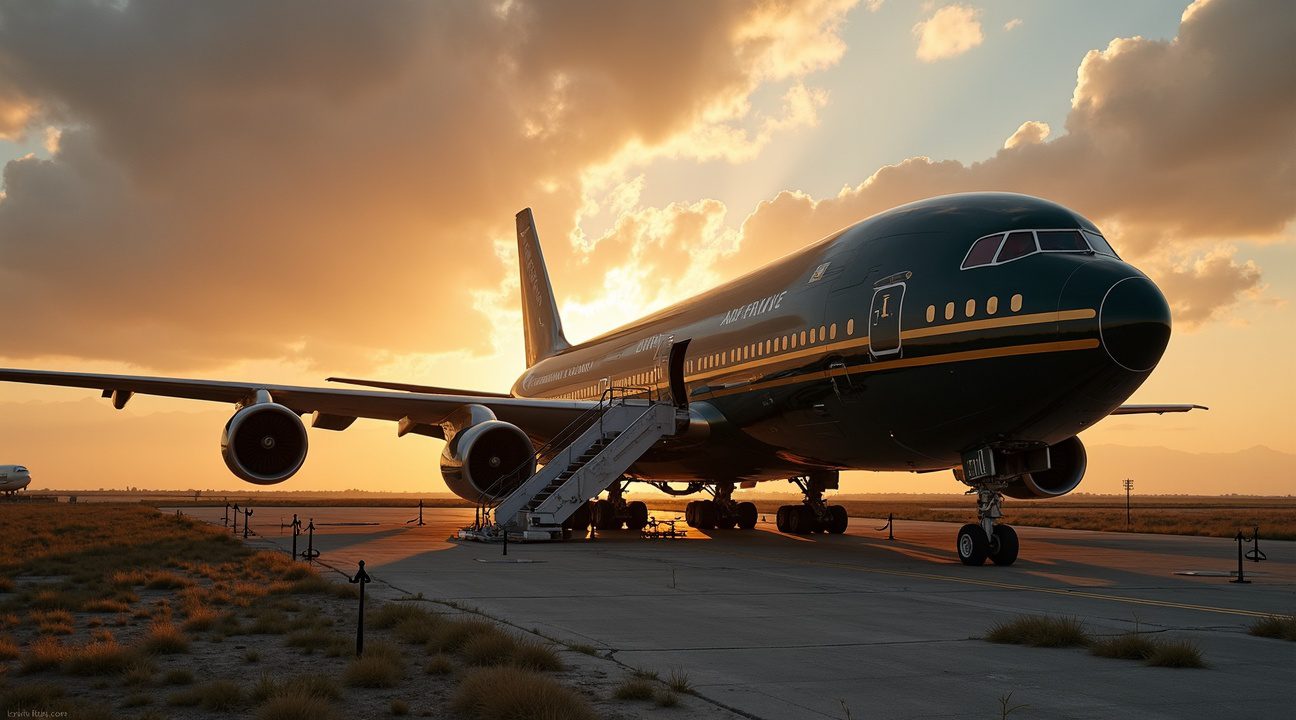
Sources:
Inside The $600 Million Boeing 747 Private Jet – YouTube
$400 Million Boeing 747-8i BBJ World’s Largest Private Jet: Photos – Business Insider
This Saudi businessman ordered the world’s largest and unluckiest private jet – Luxurylaunches
N7478D – Wikipedia
Boeing 747-8 – Wikipedia
Boeing Business Jet – Wikipedia
A Guide to the Biggest Private Jets Available – Presidential Aviation
The Most Expensive Private Jet in the World – Amalfi Jets
Airbus A380 Private Jet: The Flying Palace – Aeroclass.org

